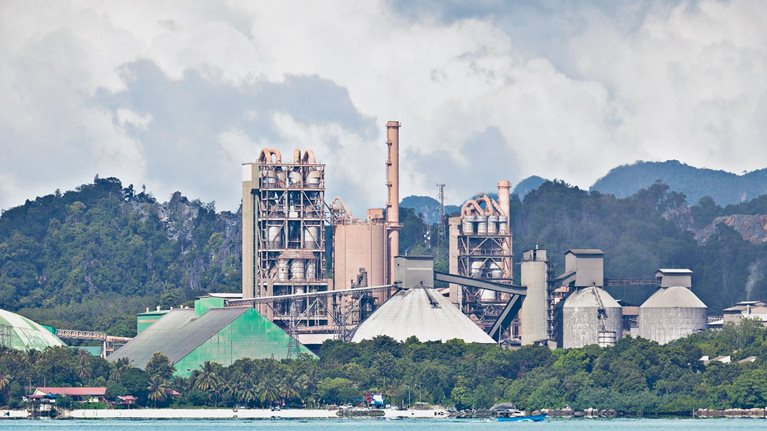Drax, a power-generation company that provides 6 percent of the United Kingdom’s electricity, is moving from coal-based power plants to plants based on biomass, a source of renewable energy. The company uses wood pellets, mostly sourced from sustainable forests in the southeastern United States, to generate steam and then electricity.
Drax Group CEO Will Gardiner spoke with McKinsey about why the company made the switch, how industry should harness carbon-capture technologies to reach zero emissions, and what the costs and challenges to scaling up its model might look like. “We are, broadly based, neutral in terms of CO2,” he said. “What we’re working on now is to see if we can go another step, which is to capture the CO2 that comes out of the power station and end up with negative emissions.”
The power of biomass
McKinsey: Let’s begin with the history of Drax and how you came to focus on renewable energy through carbon capture and storage [CCS].
Will Gardiner: I’ll start with the story of Drax, which originally was a coal-fired power station in the north of England. We deliver about 6 percent of the UK’s electricity. About ten years ago, the company decided that there was not a future for coal, so we converted four out of our six units. About two-thirds of the power station now runs on biomass—we use wood pellets to generate steam and then electricity. Biomass is considered a renewable fuel source because the forests where we get our wood pellets regrow. The recapture of the CO2 in the forest offsets the emissions that still come from the power station.
We are, broadly based, neutral in terms of CO2. What we’re working on now is to see if we can go another step, which is to capture the CO2 that comes out of the power station and end up with negative emissions.
McKinsey: Can you tell us more about the fuel source itself and where you get your pellets and how the standards work around that?
Will Gardiner: Biomass has to be sourced in a sustainable way. There’s a group called the Sustainable Biomass Program that certifies where every one of our pellets comes from. We need to meet important standards in terms of how much greenhouse-gas emissions there are in the creation of the pellets. We need to be able to say where they come from and that the forests are managed properly. In the southeastern US, where we get about 60 percent of our fiber, the forest cover there is growing and has grown by about 50 percent since the mid-1950s. There’s a very vigorous and effective forest economy in that part of the world.
Capturing carbon
McKinsey: Where is Drax in terms of moving from carbon-capture technologies to storing carbon?
Will Gardiner: You need to divide it into two pieces. There’s the capturing piece, then there’s the transport—getting the CO2 to someplace that you can store it. What we’re going to be doing at Drax is the capture piece.
McKinsey: What is your latest project, and is the UK government playing a role in facilitating CCS?
Will Gardiner: We started work about a year ago on a trial project to see whether we could capture CO2 coming out of the flue gas at the power station. We’re capturing about a ton a day, which may sound big, but it’s very small in the overall context.
Our ambition would be to do 15 million tons a year or more. We’re successfully capturing the carbon, and that’s a trial project that is expected to last for much of this year. By the end of this year, we’d like to be in a position where we know the technology works, and we also know what the cost and the challenges are to scale that up to that 15-million-ton level.
We’re working alongside the UK government, which is creating the regulatory framework to enable the transport and storage to happen. The government is going to be working through a process over the course of this year to develop the regulatory framework to enable carbon transport and storage, and we are happy to be part of that process. My hope is that by the end of this year, maybe early next year, there will be a framework for how our carbon capture can work and how the transport and storage can work and that by the mid-2020s we could be capturing quite significant amounts of CO2.
McKinsey: As you get into that scale and the transport ecosystem starts to kick in, what sorts of possibilities are there in how the carbon is stored and used?
Will Gardiner: There’s a history of doing this type of storage. And the UK is quite well positioned here because there are aquifers under the North Sea and depleted oil and gas wells where you can store the CO2. Longer term, I think the actual usage is something that needs to be explored.
The market for using CO2 today is about 600,000 tons a year in the UK, and that’s relative to those multiple millions of tons that we could capture. But we want to develop that. Whether it’s providing the fizz in your beer, whether it’s providing CO2 for a greenhouse to help tomatoes grow or, ultimately, some of the more interesting things [like] can you create synthetic fuels? Once you have the CO2 [and] combine it with some sort of hydrogen, you can start to think about other types of fuels that you might be able to make.
Getting to negative emissions
McKinsey: How does BECCS [bioenergy with carbon capture and storage] fit into your strategy of getting to negative emissions?
Will Gardiner: When people think of carbon capture and storage, it’s generally thought about in terms of coal, historically, or oil and gas, or gas generation, or other industrial processes. Because we’re using biomass at the power station to generate the electricity—and that’s effectively, again, a neutral generation technology—if we capture the CO2, then you end up with the negative emissions. And that’s where BECCS is an exciting opportunity.
McKinsey: What sorts of industries would be affected by implementing BECCS?
Will Gardiner: The Climate Change Committee [which advises the UK government on what it should be doing to address climate change] thinks the UK will have to offset about 100 million tons of CO2 to be at net zero in 2050. If we could be doing 15 or 20 million of those tons we would have a very important role to play.
There are lots of other industries, whether they be petrochemicals or other heavy industries in the northeast of the UK, that are emitting CO2. We are working on creating a cluster in the Humber, in the northeast of the UK, where multiple industries could tap into the pipeline that will get built.
If we can be an anchor for that, then you end up in a world where what you’re creating is not just something that can help fight climate change, but you’re creating the next-generation clean-energy economy built around carbon capture and enabling jobs to be saved in industries that might not be able to operate in a low-carbon world, [while also] creating new ones.
Hydrogen is also an important part of a climate-change solution. Creating hydrogen takes a lot of energy, which implies a lot of carbon capture. So, again, if you could have a low-carbon and hydrogen-based economy, there are a lot of interesting opportunities as part of an industrial strategy.
McKinsey: What sort of regulatory environment is needed?
Will Gardiner: The capturing of CO2 should be kept separate from its transport and storage. What the UK government is working on is a different mechanism to incentivize people for capturing [CO2] and another for incentivizing people to create the pipeline and storage—which I think makes sense.
In terms of the regulatory framework to incentivize the capturing, you need to think about it in two ways. One is that we need some long-term certainty. We will be making very significant investments, so we need some certainty from the government that we’ll have a long-term source of earnings to support that. The second point is if we are capturing CO2, if there is a carbon price or a carbon tax, where, effectively, the [companies that] are emitting CO2 are paying a price and [those] that are capturing it, effectively, get the reverse effect.
The future of carbon capture
McKinsey: Drax is doing something different in an industry that’s not necessarily known for being part of the solution—at least, that’s the pejorative [view]. How does all this work for you as a leader? Where do you draw energy and purpose?
Will Gardiner: In terms of running a company, I’ve got a real obligation to my shareholders, my customers, and my employees to make sure that we deliver all the things we need to do every year. You need to do all the things that make a business run.
But when I think about the strategy of the company, our purpose as a business is to enable a zero-carbon, lower-cost energy future. And if I keep that at the core of the way I think about my horizon scanning, it is incredibly inspiring for me. And I hope it’s inspiring for other people in the business.
I can’t say there is a revenue opportunity of X millions, or X hundred million in ten years’ time. But I do believe [that] it’s a problem we have to solve, and that society shares that view, and that governments will make it possible. You need to be ahead of the game, relative to a classic strategic-planning process. Having that purpose at the core of the way I think about our strategy is really helpful.
McKinsey: Looking to the future, what sorts of innovations do you find most intriguing?
Will Gardiner: Government support for new industries is about getting them off the ground, providing capital or certainty for things that the private sector maybe wouldn’t. Our obligation within that is to continue to drive down our cost base across the value chain so that we can do this without government support.
We’ve got all sorts of interesting things happening, whether they’re at our pellet plants, trying to reduce the cost of our fuel source today, or using more sawmill residues, for example. That’s also more sustainable than other things we do. Also, using different types of solvents to extract the CO2 from our flue gas. But, ultimately, it’s about driving that cost curve down. With all the renewable technologies—whether it’s solar, wind, or biomass—that’s ultimately going to be key for the future.
McKinsey: Why isn’t every coal plant transitioning to biomass?
Will Gardiner: There are several reasons. First, economics. In the US, for example, natural gas is very inexpensive, and biomass is way more expensive. As the world moves to the next step in the decarbonization journey, and natural gas becomes the next coal, then I think you need to start finding ways to replace natural gas. Carbon pricing becomes a big part of that.
Second, the technology’s not that easy. I’ve talked to a lot of my peers globally and other utilities—coal-fired power stations—and they say, “Well, we were able to do 10 percent biomass but we couldn’t do more.” Drax was in a situation where we said, “Well, we’re going to go for 100 percent.” And we went all the way. There’s a bit of a jumping over the chasm and hoping you land on the other side. And we did.


